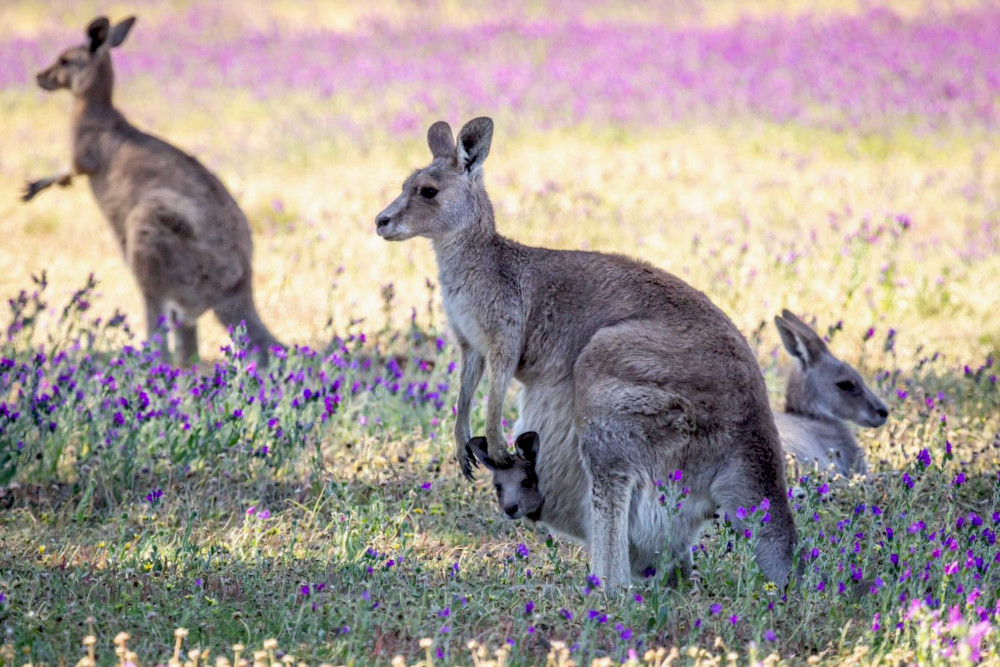
Much of the public concern about the shooting of kangaroos stems from the killing of females and the resultant death of their joeys. The Australian National Code of Practice for the Humane Shooting of Kangaroos and Wallabies for Commercial Purposes (2020) and Australian National Code of Practice for the Humane Shooting of Kangaroos and Wallabies for Non-Commercial Purposes (2008) require that if a shooter kills a female with pouch young, then they must kill the joey. Depending on the size of the joey this is usually done by decapitation or a blow to the head. Larger young may be killed by shooting. If the shooter does not kill them, it is highly likely that dependent young will die of starvation, exposure or predation.
The Code of Practice discourages shooters from shooting females carrying large pouch young. When females with young at-foot are shot, the young tend to disperse, and it is unlikely that these joeys will survive unless they are fully independent of their mothers. When females with pouch young are shot and their joeys must be killed, the methods available to shooters are limited and their relative humaneness is not fully known. While commercial kangaroo shooters are required to undergo training in shooting adult kangaroos and must pass a shooting competency test, they do not receive any training in how to humanely kill joeys. A study has shown that current methods used to kill orphan joeys are relatively humane when carried out by skilled and experienced commercial shooters [1]. However, it is recommended that all shooters be trained, competency assessed and monitored to ensure all orphan joeys are killed humanely. Most shooters are unable to identify or catch at-foot orphan joeys who are likely to die from starvation, predation or exposure.
It may be that the only solution to completely avoid the potential cruelty to pouch young is not to shoot females at all. Several years ago, major kangaroo processors adopted this policy. However, some landholders believe that male-only shooting does not remove sufficient kangaroos [2] and so they may also employ a non-commercial shooter to kill females. In response to this, commercial processors have recommenced shooting females. Although this is likely to result in more orphaned joeys compared to male only harvesting, the overall welfare risks associated with commercial shooters should be reduced compared to non-commercial shooters targeting females. Non-commercial shooters are not required to undergo training or assessment for shooting accuracy – nor is there monitoring of animal welfare – meaning there is less confidence that kangaroos will be killed humanely. This is in addition to the welfare risks relating to orphan young. The introduction of mandatory training, competency assessment and animal welfare monitoring of shooters in relation to the treatment of orphan young is a priority.
References
[1] McLeod SR and Sharp TM (2014) Improving the humaneness of commercial kangaroo harvesting. Final report for RIRDC Project No PRJ-004103. Rural Industries Research and Development Corporation, Canberra ACT.
[2] McLeod SR and Sharp TM (2020) The Australian kangaroo industry male-only harvesting, sustainability and an assessment of animal welfare impacts. AgriFutures Australia.

